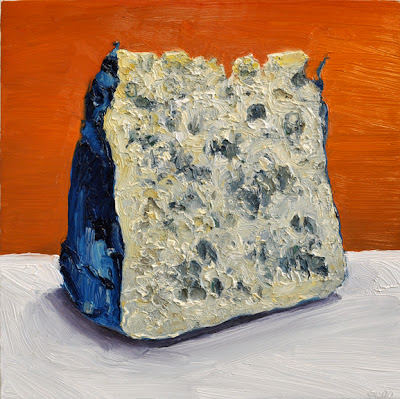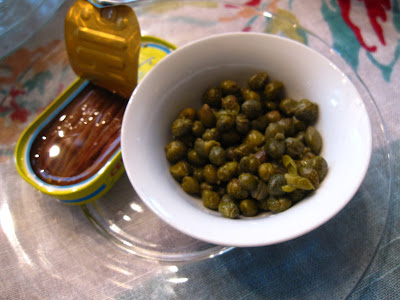 |
| By Linda Olle |
I spent a lot of time digging through cheese books yesterday, trying to settle on a royal approach to the big diggity doo. British cheeses are such obvious choices, and I wanted something campy. When you want lactic glam, you go cheese ball. And so I called on my faux-debutante-loving impersonator, Linda Olle, who sent me this dashing photo of Liptauer Cheese Balls.
Yes, I think the Middletons would approve. Who doesn’t like a little stink in the room?
Lady Olle let me know that this recipe will appear in her follow-up to The Upper East Side Cookbook – a must for any collector of mockumentary-style cookbooks or fans of print-based performance art. Linda Olle, who sometimes calls herself “Parsley Creswell," describes the inspiration for this recipe, which feels very appropriate for a stodgy function:
“There was a restaurant near Lincoln Center called Cafe Des Artistes that always had Liptauer cheese and Ritz crackers at the bar - AND hard-boiled quails eggs. The restaurant closed relatively recently, but it was the ONLY restaurant I knew of serving these two things.”
I think Her Majesty would love this mod nod to Old World food-styling. Before I get my hair set and my gloves pressed, I will be making these:
Liptauer Cheese Balls
8 oz. cream cheese
8 oz. Wisconsin cheddar
3 T sour cream
3 anchovies, mashed
1 tsp capers, minced
1 T onion, finely chopped
1 T Dijon mustard
1 ½ tsp sweet paprika
½ tsp caraway seeds, pounded
3 drops Tabasco
Blend with a paddle or by hand. Wrap and refrigerate for a few hours or overnight. An hour or two before serving, roll balls (approximately 15) in toppings. Roast nuts first in a pan on the oven and cool, before chopping. Toppings: pecans, cashews, sliced almonds, black sesame seeds, sweet paprika, parsley, crushed tortilla chips, crushed pretzels, etc.
--
Do tell, what will you be serving, dahhhlink? Toast and Marmite? A wedge of Stilton? A hunk of Berkswell? Or maybe a twist on the obvious, with a round of Knight's Vail? Or will you hole up with a bottle of gin and avoid the whole crusty affair?























